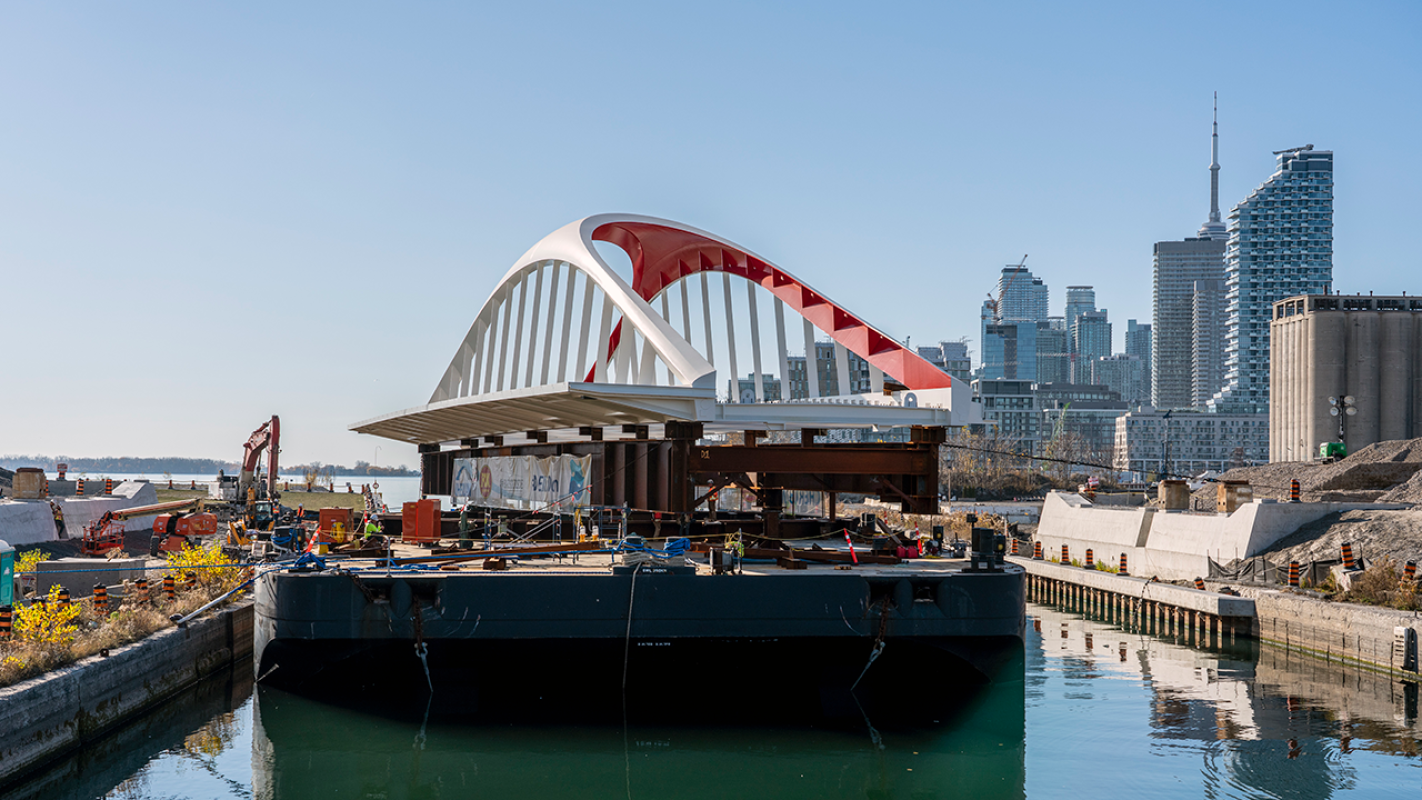Creating Jobs and Delivering Innovation Today and Tomorrow
Creating jobs and connecting the waterfront, the Cherry Street North Bridge is the first of four new bridges that will connect the future Villiers Island with the rest of the city.
JANUARY 27, 2021
By Kaleigh Wisman
Our city is up against one of the greatest challenges it has faced in recent memory. The recovery from COVID-19 will not be an easy road, and at Waterfront Toronto we are ready to do our part supporting governments in building back better and stronger. The projects we have planned now and over the next five years will aid in this period of recovery, bringing needed jobs, infrastructure and innovation that will play a huge role in our city’s return to economic strength.
This is the second blog in our three-part series exploring the major elements of our updated Rolling Five-Year Strategic Plan and what we will accomplish this year and beyond: public good, jobs and innovation and city-building. The first blog looked at how we are planning for the public good and here we focus on jobs and innovation.
The Port Lands Flood Protection Project is a job creator
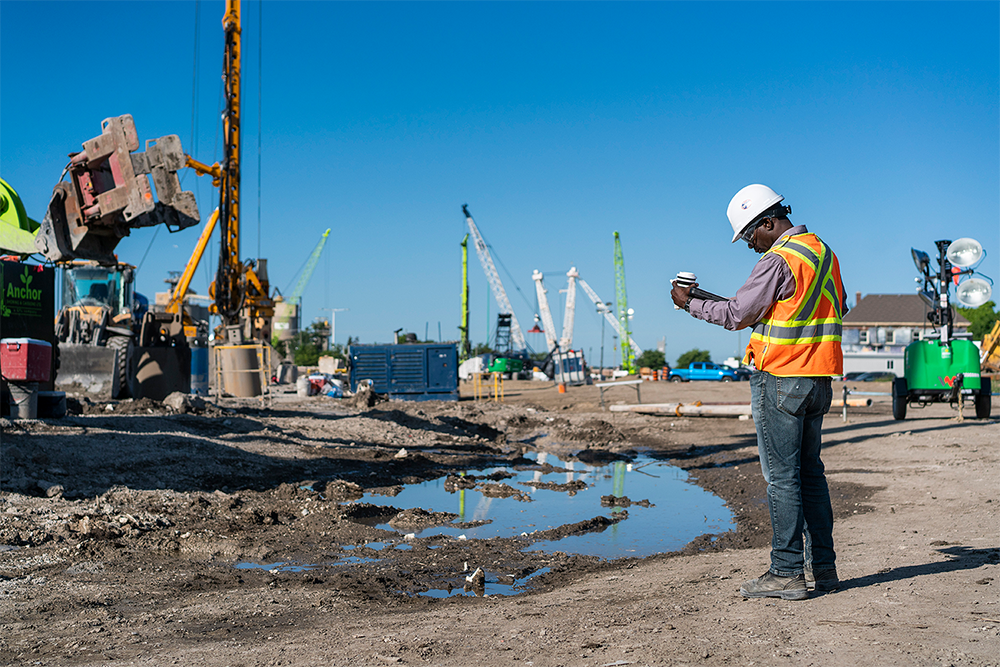 Many of the jobs created by PLFP are in the construction industry but also span sectors such as real estate, finance and science.
Many of the jobs created by PLFP are in the construction industry but also span sectors such as real estate, finance and science.
A transformative investment in Toronto’s landscape and economy, The Port Lands Flood Protection Project (PLFP) will have many different economic impacts. Some are already being felt, others will occur in the next several years and some will unfold over the long term as this work transforms a large portion of the city. In the near term, PLFP is a huge job creator and will be responsible for most of the 2,934 person years of employment expected to be generated by waterfront revitalization over the next fiscal year.
In 2024, when PLFP reaches completion, 240 hectares (593 acres) of prime land will be made available for development. This extraordinary transformation will make an area the size of downtown available for people to live, work and play — while maintaining some of the existing industrial uses. In the long term, it’s no exaggeration to say this will transform Toronto’s landscape and have a dramatic and sustained economic impact. The project will add a total of $5.1 billion to the Canadian economy and $1.9 billion in revenue to governments all while setting a global standard for innovative green infrastructure and resilient city-building for the 21st century.
Three Buildings, Incredible Innovation
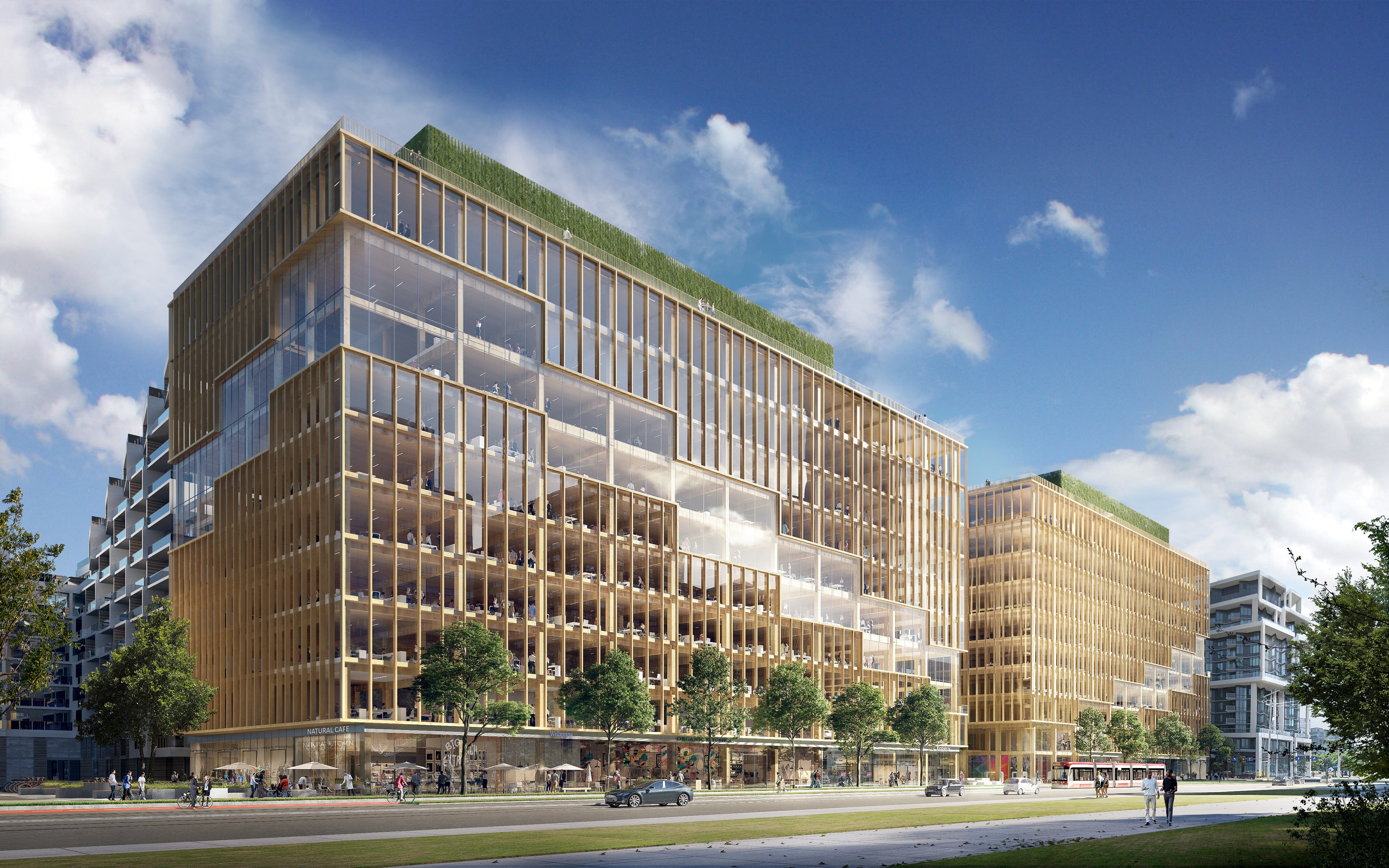 T3 Bayside will attract jobs and act as a hub for innovation on the waterfront. (Rendering courtesy of Hines)
T3 Bayside will attract jobs and act as a hub for innovation on the waterfront. (Rendering courtesy of Hines)
Waterfront Toronto leverages public resources to attract private investment and catalyze economic development. Through collaboration across all three levels of government, we use public funds to initiate carefully chosen revitalization projects and then convene a range of partners to ensure those projects reach their full potential economically, socially and ecologically. This approach has made the waterfront a powerful magnet for investment, both from the private sector and from institutions such as George Brown College.
In 2021/2022 the Waterfront Innovation Centre, T3 Bayside and the Arbour will continue to take shape. These new buildings in East Bayfront are not only innovative in the way that they are being built, but they will also attract innovative thinkers and companies.
-
The Waterfront Innovation Centre, which will begin occupancy at the end of 2021, will be home to tenants such as MaRS, in partnership with the University of Toronto, and communications services company WPP. This centre is destined to become a hub for innovation and creativity on the waterfront.
-
T3 Bayside is set to be the tallest mass-timber office building in North America — an achievement in sustainability and innovation. With phase 1 set to be complete in 2023, it already attracts 100-150 workers on site daily, not including the administrative, coordination, management and manufacturing jobs that are also a direct result of this project.
-
The Arbour is the newest facility in the George Brown College Waterfront Campus and will be one of Ontario’s first low-carbon mass-timber institutional buildings. When complete, The Arbour will house the college’s School of Architectural Studies, including a mass-timber research hub, and its School of Computer Technology.
When fully built, these three new buildings will attract over 5,000 jobs combined—a tremendous economic boost to our city, not to mention the formation of what will surely be known as an innovation district on the waterfront.
A Strategy for Toronto’s Harbour
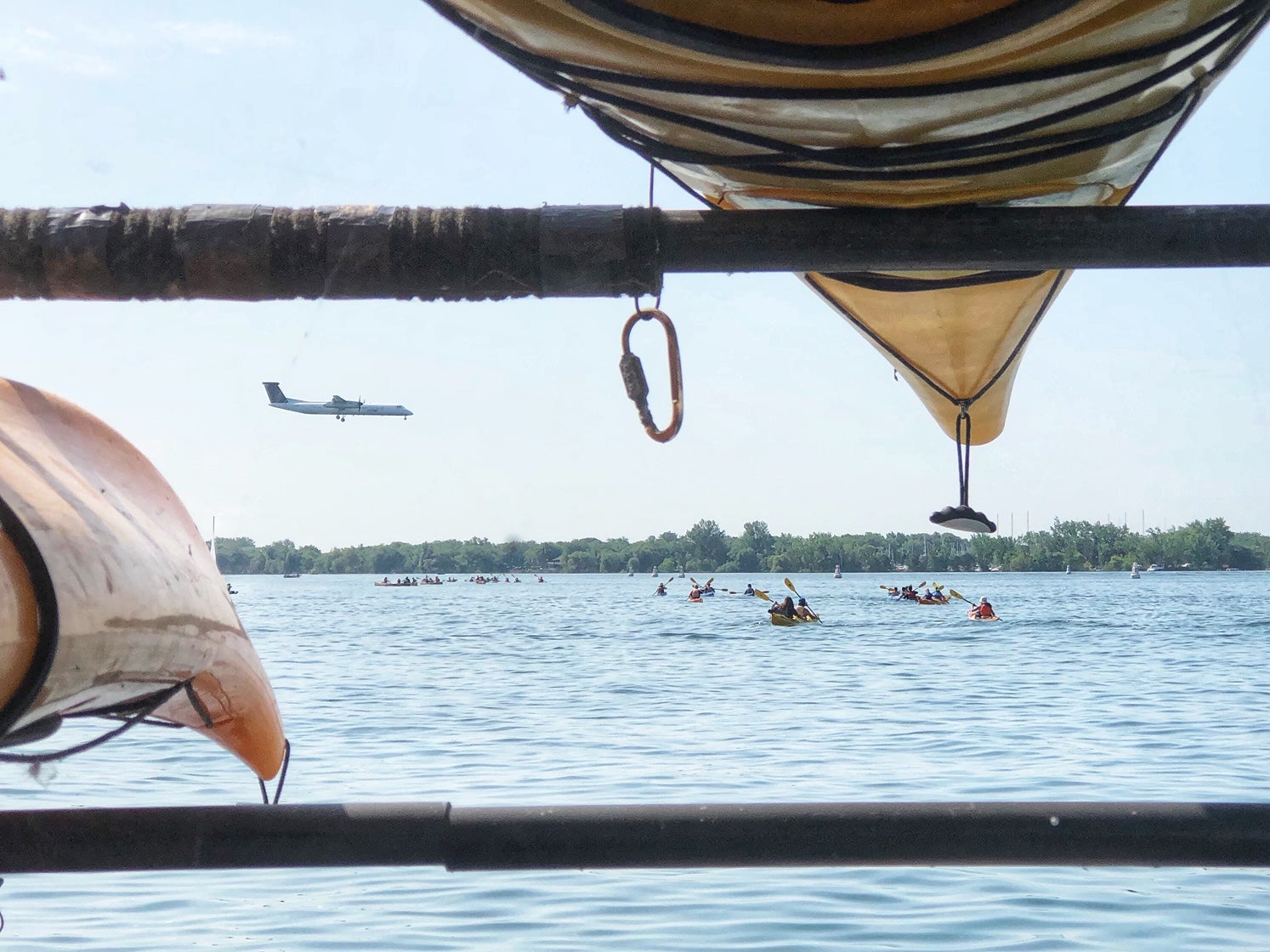 We have updated the 2006 Marine Use Strategy to reflect the current uses and potential future uses of Toronto’s harbour.
We have updated the 2006 Marine Use Strategy to reflect the current uses and potential future uses of Toronto’s harbour.
Successful waterfronts around the world share one important quality: they help people easily access an array of great places and activities, by water and by land. Currently, Toronto’s waterfront facilitates industrial, commercial and recreational boating and offers ferry service, predominantly to the Toronto Islands. But there’s plenty of unrealized potential for people to move around by water — both for fun and to get from A to B. The 2020 Marine Use Strategy, a collaborative effort with the City of Toronto, PortsToronto and Toronto and Region Conservation Authority, explores the potential of the harbour and includes a set of recommendations around three key themes: movement, mooring and management.
Working with our partners and the public, we are ready to explore and implement innovative solutions to lay the foundations for greater connectivity around and across the harbour as well as making the harbour a great place to participate in recreational water activities. The first step in making this happen will be to establish an independent Marine Coordinating Committee. The purpose of this new committee will be to examine the complex issues relating to the harbour and provide leadership for all proposals in the report.
Getting Around
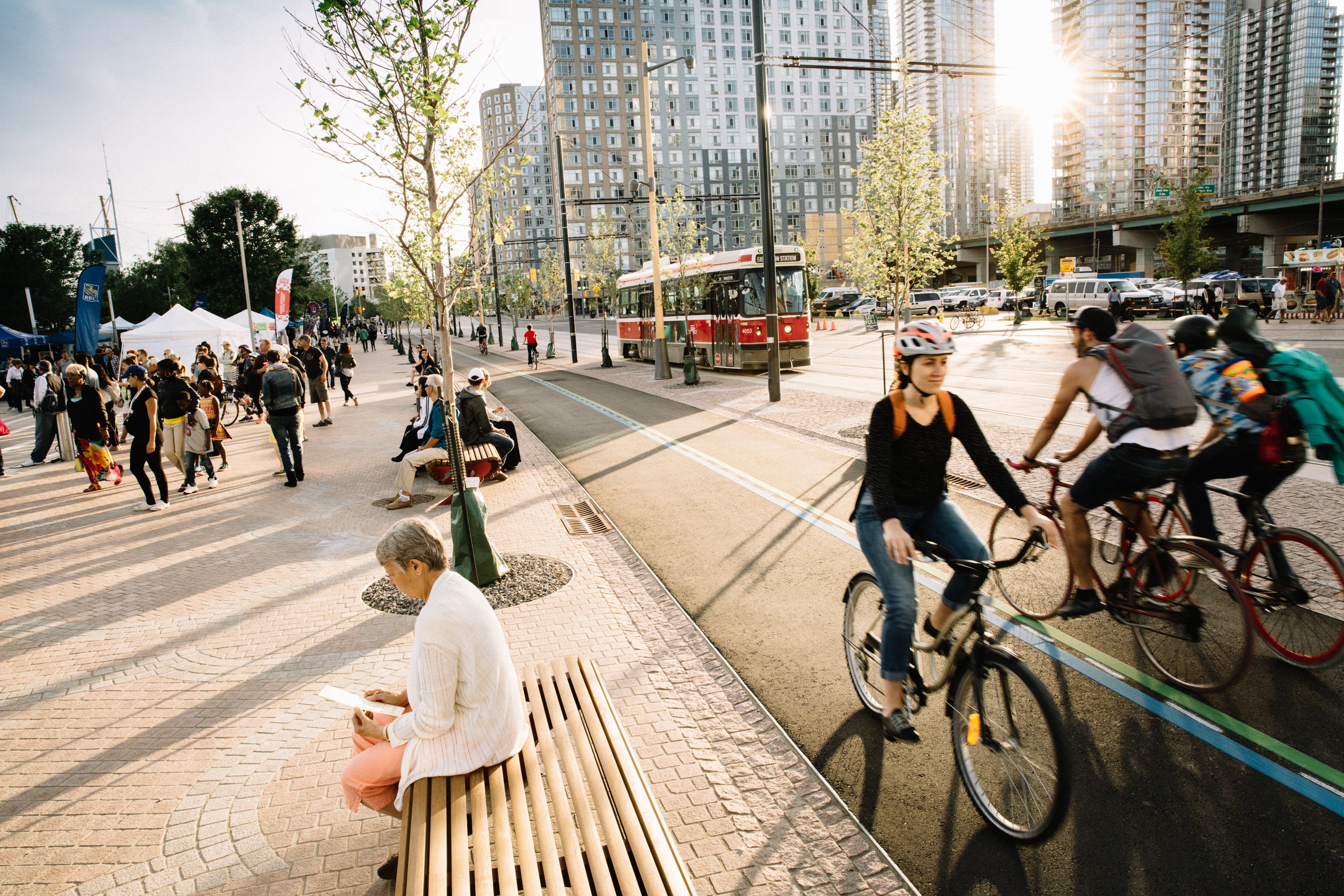 We continue to extend the revitalization of Queens Quay East toward Cherry Street, increasing mobility and enhancing public space.
We continue to extend the revitalization of Queens Quay East toward Cherry Street, increasing mobility and enhancing public space.
To support an economically and socially vibrant waterfront, we are working to enhance connections along the waterfront and between the waterfront and the rest of the city. This means extending transit service into new areas and ensuring it is safe and easy to navigate the waterfront on transit, bike, foot or on wheels.
When it comes to transit, our current focus is on designing the infrastructure needed to extend the streetcar services under Bay Street eastward. This year, we aim to reach a 30% design milestone for the segment on Queens Quay East between Bay Street and future Silo Street as well as for the Queens Quay East extension to the existing loop in the West Don Lands. When complete, this updated segment of Queens Quay will facilitate better transit and lead to innovative improvements to street and intersection design, including the implementation of green street design principles. The new Queens Quay East will feature a generous granite mosaic pedestrian promenade defined by a double row of trees that will run alongside an off-street Martin Goodman Trail, improving access for walking and cycling.
Whether we are developing much needed transit infrastructure or building a new island, we are creating a waterfront that will attract investment, create jobs and drive innovation. Over the next year and beyond, we are proud to be creating opportunities that will support our city and its people as we all recover from the impacts of COVID-19.
The complete Rolling Five-Year Strategic Plan can be found here.

